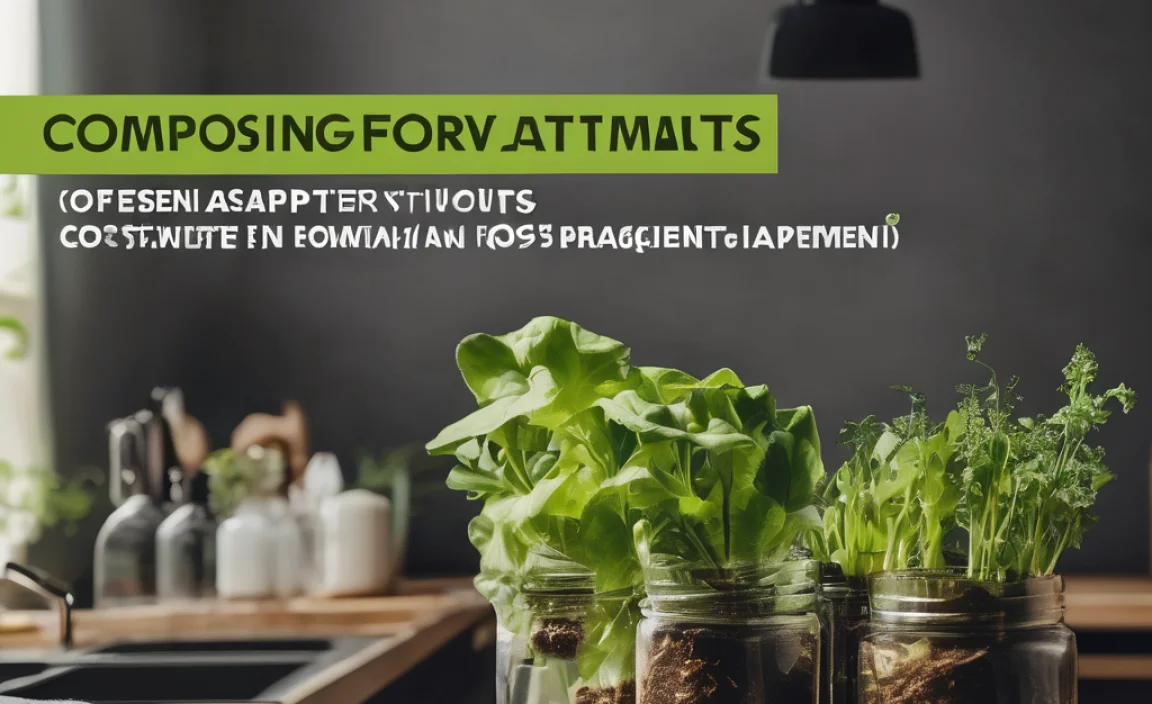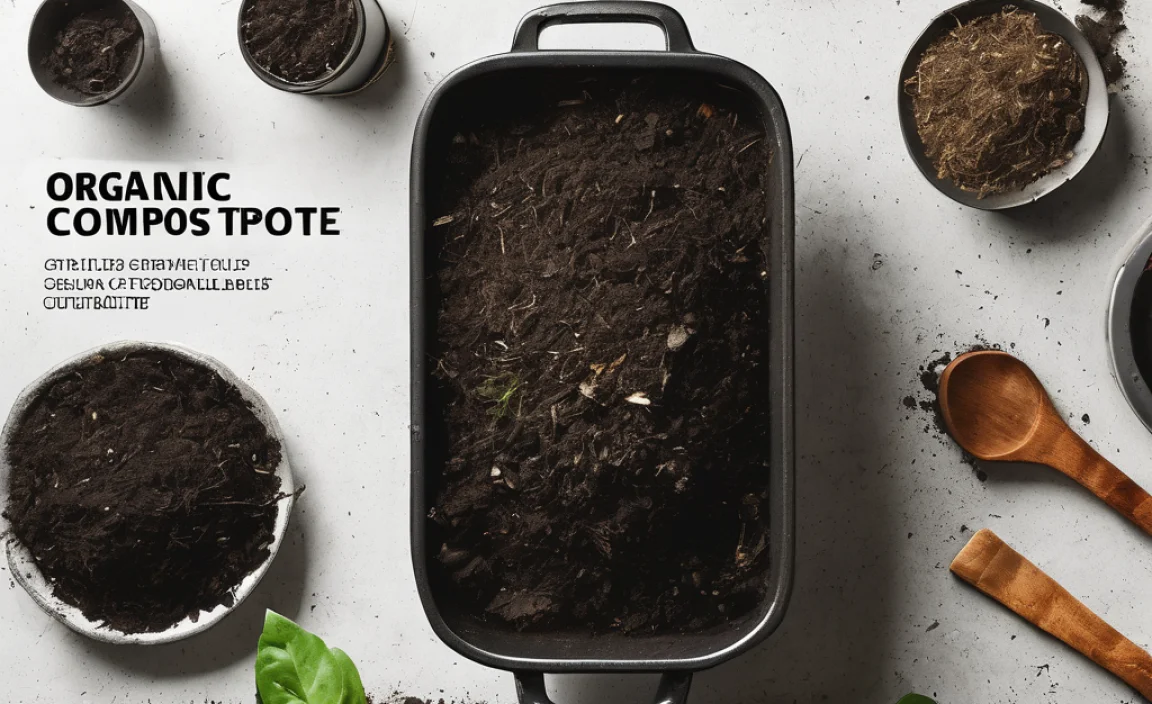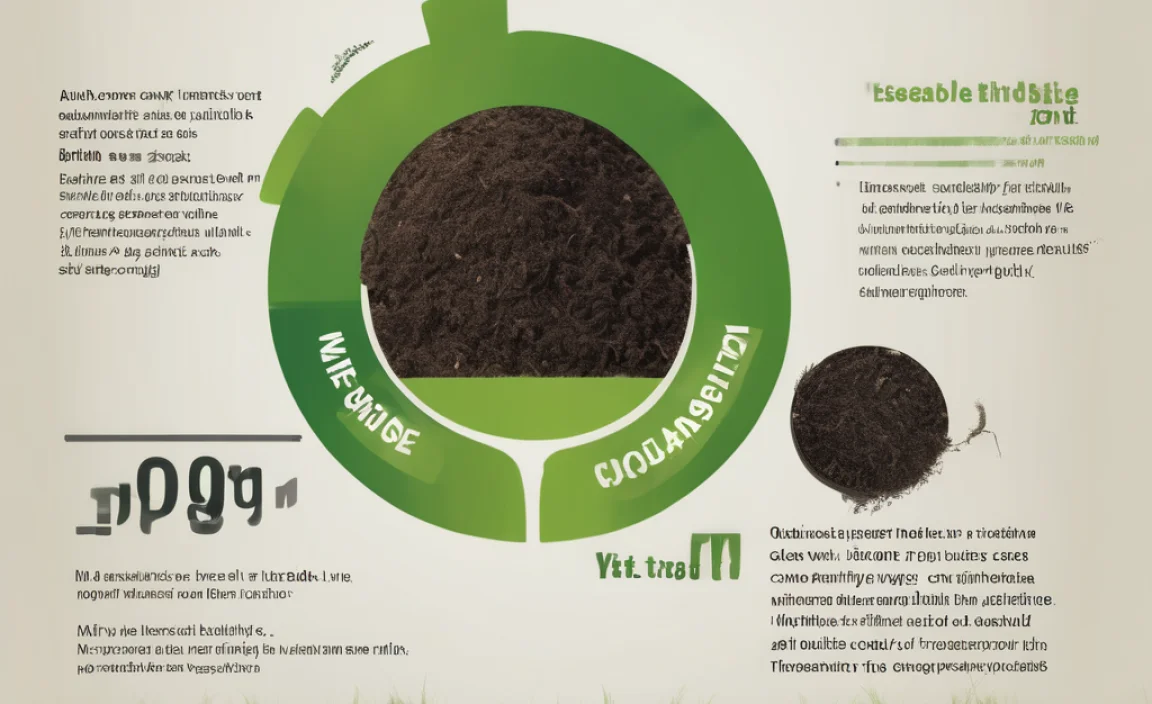Ever tossed kitchen scraps and yard trimmings into a pile, only to end up with… well, just a pile? You’re not alone! Composting can seem a bit mysterious, especially when you hear about “hot composting.” But don’t worry, it’s totally doable, and the results are amazing – rich, nutrient-packed soil for your garden. I’m Troy D Harn from TopChooser, and I’m here to break down the secrets of hot composting into simple, easy steps. Get ready to turn that “pile” into black gold!
What is Hot Composting and Why Should You Care?
So, what’s the deal with “hot composting”? Think of it as Speedy Gonzales of the composting world. Instead of waiting months or even years for your organic stuff to break down, hot composting gets it done in a matter of weeks. How? By creating the perfect environment for tiny microbes to work their magic, generating heat in the process.
This heat is your friend! It’s a sign that the composting process is happening rapidly. More importantly, this high temperature kills off weed seeds and pathogens that might be lurking in your yard waste or kitchen scraps. This means you get a safer, more potent compost for your prized plants.
Why should you care? Simple:
Faster results: Get usable compost much quicker.
Healthier garden: Kills weed seeds and harmful bacteria.
Less odor: A well-managed hot compost pile usually smells earthy, not rotten.
Less work (long term): Once you get the hang of it, it’s quite efficient.
The Science Behind the Heat: Understanding the Ingredients
The key to hot composting is achieving a balance between two main types of materials: “greens” and “browns.” This isn’t just about color; it’s about their carbon and nitrogen content.
Greens (Nitrogen-Rich Materials)
Think of greens as the “fuel” for your compost pile. They are typically moist and break down quickly, providing the nitrogen that microbes need to multiply and generate heat.
Examples of Greens:
Fruit and vegetable scraps (peels, cores, wilted greens)
Coffee grounds and tea bags
Grass clippings (freshly cut)
Plant trimmings (non-woody)
Manure (from herbivores like cows, horses, chickens, rabbits) – very potent!
Browns (Carbon-Rich Materials)
Browns are the “food” for the microbes. They are usually dry and provide the carbon necessary for their energy and growth. They also help aerate the pile, preventing it from becoming a dense, soggy mess.
Examples of Browns:
Dry leaves
Straw or hay
Shredded newspaper or cardboard (avoid glossy or heavily inked materials)
Wood chips or sawdust (use sparingly, as they break down slowly)
Pine needles
Eggshells (though they are calcium, they break down slowly and add structure)
The Magic Ratio: Getting Your Greens and Browns Right
This is where the magic happens! For hot composting, you generally want a mix that is roughly 25-30 parts carbon (browns) to 1 part nitrogen (greens) by weight. In simpler terms (and this is much easier to eyeball), aim for about 2 to 3 times more browns than greens by volume. Don’t get too hung up on exact measurements; it’s more about getting a good balance.
Too many greens? Your pile might get slimy and smelly. Too many browns? It might not heat up enough. It’s a bit of an art, but you’ll get the feel for it!
Choosing Your Composting System: The Best Bin for You
You don’t need a fancy setup to hot compost. However, a good bin can make things easier and more efficient.
Open Piles
This is the simplest method. You just create a pile in a corner of your yard. It’s free and easy to build, but it can look a bit messy and might require more frequent turning to maintain heat and moisture.
Enclosed Bins
These are often plastic bins with lids, sometimes with hatches for easy access. They help retain heat and moisture, deter pests, and look neater. Many are designed for easy turning.
Tumblers
These are large drums that you can easily rotate by hand. Tumblers are excellent for hot composting because they make turning incredibly simple, which is crucial for aeration and speeding up the process. They also heat up quickly and keep critters out.
Essential Tools for Hot Composting Success
You don’t need a shed full of tools, but a few key items will make your hot composting journey much smoother.
Pitchfork or Compost Turning Tool: Essential for aerating the pile. A pitchfork is great for turning and forking materials into the pile, while specialized compost aerators make it easy to reach the center.
Garden Hose with Spray Nozzle: For adding moisture to the pile.
Thermometer (Optional but Recommended): A long compost thermometer is ideal for checking the internal temperature of your pile. This is a key indicator of whether your hot composting is working.
Shovel or Spade: For moving materials around.
Watering Can (Optional): For spot-watering drier areas.
Gloves: To keep your hands clean and protect them.
Your Step-by-Step Guide to Hot Composting
Ready to get your hands dirty? Here’s how to build and manage a hot compost pile:
Step 1: Choose Your Location
Find a spot that is easily accessible and gets some sun (this helps with heating), but not so much that it dries out too quickly. It should be on bare earth if possible, so beneficial microbes and worms can access the pile.
Step 2: Start Building Your Base Layer
Begin with a layer of coarse brown materials. Think twigs, small branches, or straw. This helps with drainage and aeration from the bottom up. Aim for about a 4-6 inch layer.
Step 3: Add Your First Layers of Greens and Browns
Now, start layering your greens and browns. Aim for that 2-3 part browns to 1 part greens ratio. For example, a layer of grass clippings (greens) followed by a thicker layer of dry leaves (browns).
Pro Tip: Chop or shred larger items. Smaller pieces have more surface area, which helps them break down faster and heats up the pile more effectively.
Step 4: Incorporate Moisture
As you add layers, gently water them. The goal is for the pile to be as damp as a wrung-out sponge. Not dripping wet, but definitely moist. If you’re adding dry materials like straw or shredded cardboard, you’ll need to add more water.
Step 5: Build the Pile
Continue layering greens and browns, watering as you go, until your pile is at least 3 feet high and 3 feet wide. This size is generally considered the minimum to generate and retain enough heat for hot composting. A larger pile will heat up more effectively.
Important Safety Note: If you’re adding manure, especially from chickens, ensure it’s well-mixed with browns. Fresh, uncomposted manure can be too “hot” in terms of nitrogen and can burn plants if used directly. Composting it breaks it down safely.
Step 6: Turn Your Pile
This is the most crucial step for hot composting. Turning introduces oxygen, which the microbes need to thrive and generate that high heat. Aim to turn your pile every 4-7 days. You’ll know it’s time when the temperature starts to drop after reaching its peak. Use your pitchfork to mix the outer, cooler layers into the hot center, and the hot center materials to the outside.
Turn the pile thoroughly, ensuring you break up any clumps and distribute moisture evenly.
Step 7: Monitor Temperature and Moisture
If you have a thermometer, stick it in the center of the pile. A hot compost pile should reach temperatures between 130°F and 160°F (54°C to 71°C). This high heat is what kills weed seeds and pathogens.
Check the moisture regularly. If it feels dry, add water. If it’s too wet (and smells bad), add more browns and turn thoroughly.
Step 8: Let It Cure
After a few weeks of regular turning and heating, the pile will start to cool down. You’ll notice it shrinks considerably. Once it’s no longer heating up significantly, let it sit for another couple of weeks to “cure.” This allows the compost to stabilize and mature, making it ready for use.
Troubleshooting Common Hot Composting Problems
Even with the best intentions, you might run into a few snags. Here’s how to fix them:
Problem: My pile isn’t heating up.
Fix:
Not enough greens (nitrogen): Add more nitrogen-rich materials like grass clippings, coffee grounds, or vegetable scraps.
Too dry: Add water and mix it in thoroughly.
Not enough volume: Your pile might be too small. Aim for at least 3x3x3 feet.
Needs aeration: Turn the pile to introduce oxygen or add more coarse brown materials for air pockets.
Problem: My pile smells bad (like ammonia or rotten eggs).
Fix:
Too many greens (too much nitrogen): Add plenty of carbon-rich brown materials (leaves, shredded cardboard) and turn the pile to aerate. Ammonia smell often means excess nitrogen.
Too wet and dense (anaerobic): Add dry browns and turn thoroughly to introduce air. Rotten egg smell usually indicates a lack of oxygen.
Problem: It’s taking too long.
Fix:
Materials are too large: Chop or shred everything before adding it.
Not enough turning: Turn more frequently (every 4-5 days).
Pile is too small: Ensure your pile is of adequate size for efficient heating.
For more detailed information on compostable materials and management, the U.S. Environmental Protection Agency (EPA) offers great resources on composting basics and best practices.
What Can Go In Your Hot Compost Pile?
Here’s a quick rundown of what’s generally good to compost and what to avoid for a healthy, hot pile:
Good to Compost (Generally) Avoid (Usually)
Fruit and vegetable scraps Meat, fish, bones, and dairy products (attract pests, can smell)
Coffee grounds and paper filters Oils, grease, and fats
Tea bags Diseased plants or weeds that have gone to seed (unless your pile reliably gets very hot)
Eggshells (crushed) Pet waste (dog and cat feces – can contain pathogens)
Grass clippings (in moderation, mixed with browns) Treated wood or sawdust (chemicals)
Leaves, straw, hay Glossy or plastic-coated paper/cardboard
Shredded newspaper and plain cardboard Coal or charcoal ash
Yard trimmings (non-woody) Human waste
Wood chips/sawdust (in moderation) Weeds that have gone to seed
Manure from herbivores (cow, horse, rabbit, chicken) Anything chemically treated
FAQs About Hot Composting
Here are some common questions beginners have about hot composting.
How long does hot composting take?
A well-managed hot compost pile can produce finished compost in as little as 4 weeks to a few months. This is much faster than cold composting, which can take 6 months to 2 years.
Do I need a special bin for hot composting?
Not necessarily. While tumblers or well-designed enclosed bins can speed things up and make turning easier, a simple open pile of adequate size (at least 3x3x3 feet) can also achieve hot composting temperatures with regular turning.
Will hot composting kill weed seeds and plant diseases?
Yes, that’s one of the major benefits of hot composting. When the pile consistently reaches temperatures between 130°F and 160°F (54°C to 71°C), it effectively sterilizes the material, neutralizing most weed seeds and harmful pathogens.
What if my compost pile smells bad?
A bad smell (like ammonia or rotten eggs) usually indicates an imbalance. Ammonia smells suggest too much nitrogen (greens), while rotten egg smells suggest a lack of oxygen due to the pile being too wet or compacted. Adding more browns and turning the pile usually fixes both issues.
How much should I turn my hot compost pile?
To maintain high heat and rapid decomposition, you should turn your pile every 4 to 7 days, or whenever you notice the temperature dropping after its peak. Turning introduces essential oxygen.
Can I put kitchen scraps in a hot compost pile?
Absolutely! Kitchen scraps like fruit and vegetable peels, coffee grounds, and tea bags are excellent “green” materials that provide nitrogen and help heat up the pile. Just be sure to avoid meat, dairy, and oily foods, as these can attract pests and cause odors.
What is the ideal carbon to nitrogen (C:N) ratio for hot composting?
The ideal carbon to nitrogen ratio for hot composting is roughly 25-30 parts carbon to 1 part nitrogen by weight. In simpler terms, this means having about two to three times more “brown” materials (like leaves, straw, shredded paper) than “green” materials (like kitchen scraps, grass clippings) by volume.
Conclusion: Your Journey to Black Gold Begins!
See? Hot composting isn

I am passionate about home engineering. I specialize in designing, installing, and maintaining heating, ventilation, and air conditioning systems. My goal is to help people stay comfortable in their homes all year long.



